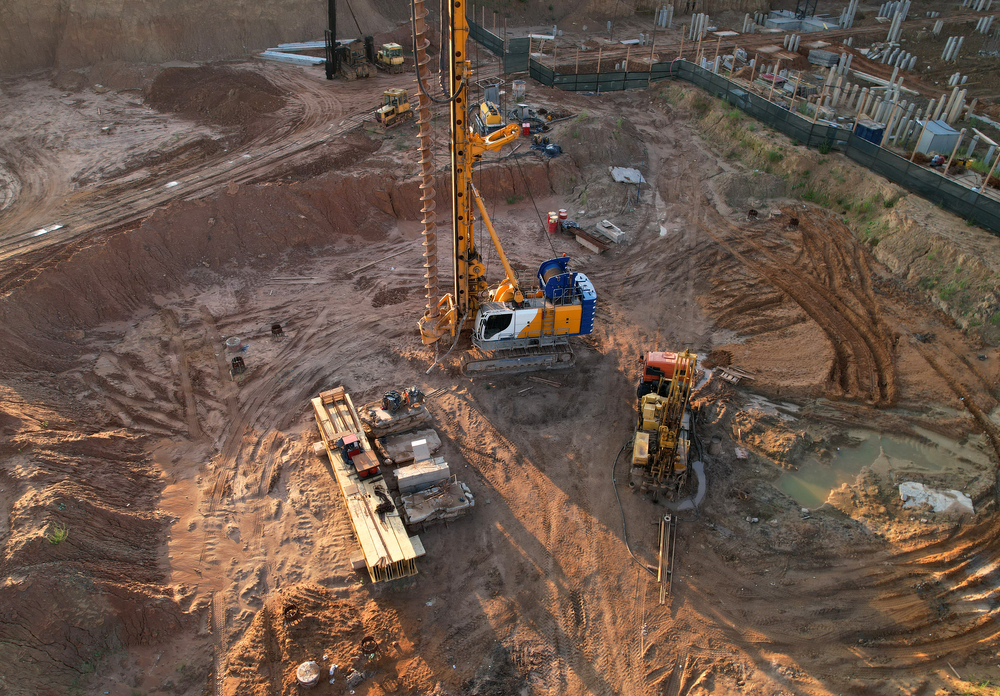Excitement About Geotheta
Excitement About Geotheta
Blog Article
The Main Principles Of Geotheta
Table of ContentsGeotheta Fundamentals ExplainedThe smart Trick of Geotheta That Nobody is DiscussingGeotheta Things To Know Before You BuySee This Report on GeothetaWhat Does Geotheta Mean?

They carry out site investigations, gather examples, execute laboratory examinations, and evaluate information to assess the suitability of the ground for building projects - Consulting Engineers. Based upon their findings, geotechnical designers offer recommendations for foundation style, incline security, maintaining frameworks, and reduction of geotechnical dangers. They collaborate with various other experts, such as engineers, architectural designers, and building and construction groups, to make certain that geotechnical considerations are integrated right into the general job layout and execution
By assessing the behavior and buildings of soil and rock, they can identify potential geotechnical hazards such as landslides, dirt negotiation, or incline instability. Their proficiency aids protect against failings or crashes that might threaten lives and property. Below are some thorough obligations and duties of a geotechnical designer: Website Investigation: Geotechnical engineers conduct site investigations to gather data on subsurface problems.
They interpret the data to comprehend the properties and habits of the soil and rock, including their toughness, permeability, compaction features, and groundwater problems. Geotechnical Evaluation and Layout: Geotechnical designers analyze the data gathered during site investigations to evaluate the stability and suitability of the site for construction projects. They carry out geotechnical calculations and modeling to assess elements such as birthing ability, negotiation, incline stability, lateral earth pressures, and groundwater circulation.
The Ultimate Guide To Geotheta
Structure Style: Geotechnical engineers play an essential duty in making foundations that can safely support the designated structure. They examine the soil problems and tons needs to identify the ideal structure type, such as superficial foundations (e.g., grounds), deep foundations (e.g (https://profile.hatena.ne.jp/geotheta/)., stacks), or specialized methods like soil enhancement. They think about aspects such as settlement restrictions, birthing ability, and soil-structure communication to develop optimum foundation designs
They examine building and construction plans, monitor website activities, and perform area inspections to validate that the style recommendations are complied with. If unpredicted geotechnical issues emerge, they evaluate the circumstance and provide suggestions for remediation or changes to the layout. Threat Analysis and Mitigation: Geotechnical engineers assess geotechnical risks and threats related to the project site, such as landslides, liquefaction, or dirt disintegration.

Collaboration and Interaction: Geotechnical designers work very closely with various other specialists included in a job, such as architects, architectural designers, and building groups. Efficient communication and partnership are vital to integrate geotechnical considerations into the overall job layout and building procedure. Geotechnical designers offer technical know-how, answer queries, and make sure that geotechnical demands are met.
Some Known Details About Geotheta
Below are some sorts of geotechnical designers: Foundation Engineer: Structure engineers concentrate on developing and analyzing foundations for structures. They examine the dirt conditions, lots needs, and website attributes to identify the most proper structure kind and style, such as superficial structures, deep structures, or specialized techniques like pile foundations.
They review the factors influencing slope stability, such as dirt homes, groundwater conditions, and slope geometry, and establish techniques to avoid slope failings and alleviate threats. Quake Engineer: Earthquake engineers specialize in assessing and developing frameworks to stand up to seismic forces. They evaluate the seismic threat of a site, assess dirt liquefaction potential, and create seismic design criteria to ensure the safety and security and resilience of structures during quakes.
They perform area testing, accumulate samples, and evaluate the collected data to define the soil buildings, geologic developments, and groundwater problems at a website. Geotechnical Instrumentation Engineer: Geotechnical instrumentation designers focus on surveillance and measuring the behavior of dirt, rock, and structures. They set up and preserve instrumentation systems that keep track of elements such as dirt negotiation, groundwater degrees, slope movements, and architectural displacements to analyze efficiency and supply early warnings of potential issues.
The Best Strategy To Use For Geotheta
They conduct examinations such as triaxial tests, loan consolidation tests, direct shear examinations, and permeability tests to collect information for geotechnical analysis and layout. Geosynthetics Designer: Geosynthetics engineers focus on the style and application of geosynthetic products, such as geotextiles, geogrids, and geomembranes. They utilize these materials to boost soil stability, enhance inclines, give drainage services, and control erosion.
They have a tendency to be investigative individuals, which means they're intellectual, reflective, and investigative. They wonder, methodical, sensible, analytical, and sensible. Some of them are additionally social, implying they're kind, charitable, participating, patient, caring, handy, understanding, tactful, and friendly. Does this seem like you? Take our complimentary job test to discover if geotechnical engineer is one of your top occupation suits.
In the office setting, geotechnical designers use specialized software application tools to execute calculations, create layouts, and examine data. They prepare reports, testimonial job specifications, communicate with customers and employee, and coordinate task tasks. The office setup gives a favorable environment for study, analysis, and cooperation with other professionals associated with the job.
Not known Factual Statements About Geotheta
They frequently visit project websites to perform website investigations, assess geotechnical conditions, and gather data for evaluation. These brows through include traveling to different locations, in some cases in remote or difficult surfaces. Geotechnical engineers Related Site might execute dirt tasting, conduct examinations, and monitor construction activities to make certain that the geotechnical elements of the project are being applied appropriately.
Geotechnical designers additionally work in specialized geotechnical research laboratories. In these facilities, they perform experiments, do tests on dirt and rock examples, and assess the engineering buildings of the products. Geotechnical laboratory engineers function thoroughly in these atmospheres, handling testing equipment, running tools, and taping data. They work together with various other laboratory personnel to guarantee accurate and dependable testing results.
Report this page